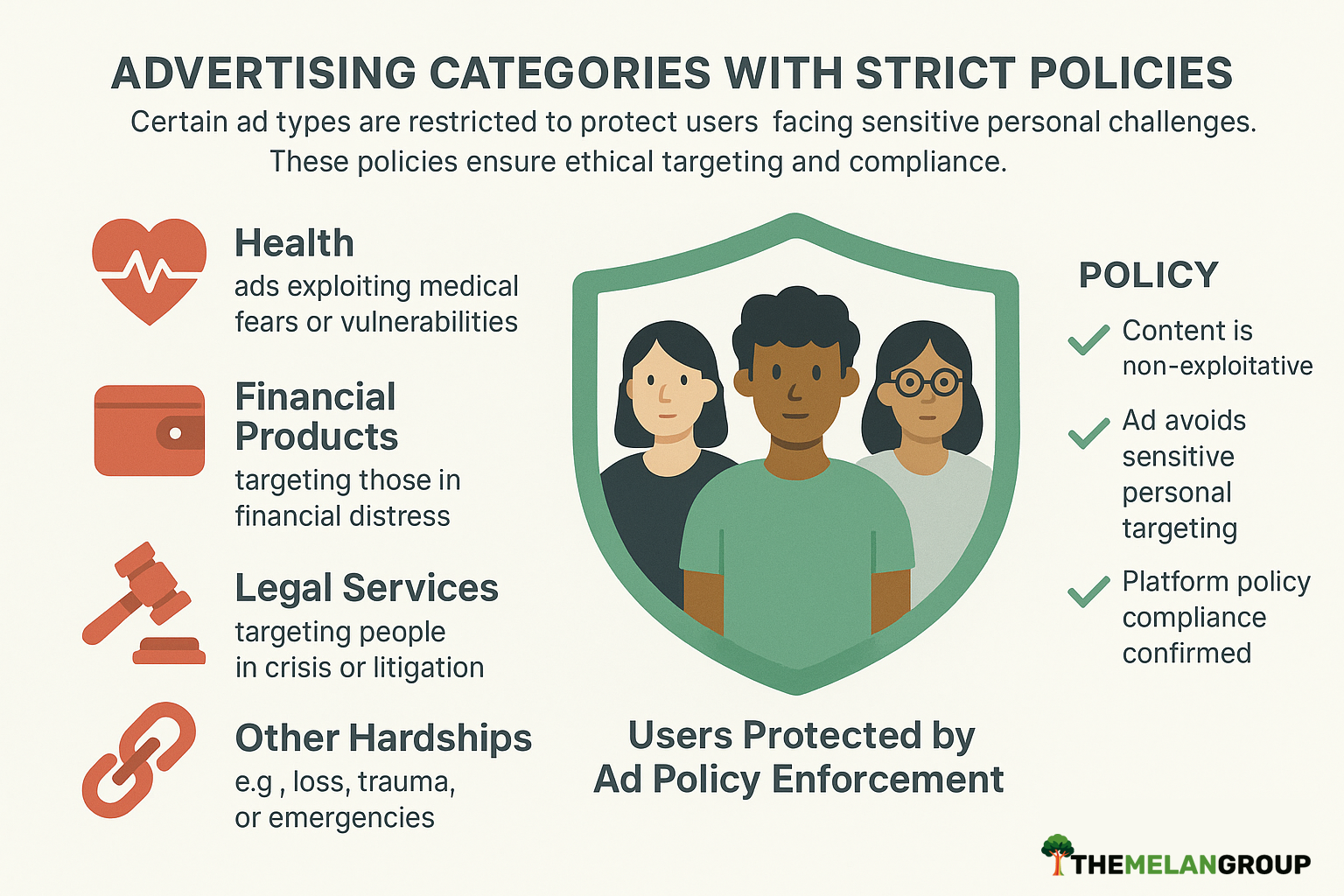Background on eCommerce Platforms
eCommerce platforms like Google Merchant Center, Amazon Seller Central, Squarespace, Woocommerce, Facebook Commerce Manager, and Microsoft Merchant Center. These platforms process millions of product listings daily, with 87% of customers relying on product listings as the primary purchase decision factor (ConvertCart, 2025; Besedo, 2024). With that many products listed, platforms must manage these listings and scan all of them to remove harmful listings, scams, and fake reviews to protect consumers, brands, and maintain trust in the respective marketplaces (Annotation Box, 2023; Gear Inc, 2024). For the purpose of this article, we’re focusing on Google Merchant Center and Google Shopping and its moderation process.
Two Ways to List Products on Google
Google Merchant Center serves as the gateway for product feed management and advertising across Google’s ecosystem, requiring structured data feeds that automatically sync product information. Google Shopping alone generates billions in merchant advertising fees and when products are listed with exceptional descriptions, product sales conversions increase by 2,706% (ConvertCart, 2025).
As a search engine, Google regularly scans entire merchant websites to extract product data and keep listings accurate across its platforms. This happens through two distinct paths: one intentional and merchant-managed via Google Merchant Center, and one automated and initiated by Google through its “surfaces across Google” program, which includes Google Shopping.
Google Merchant Center
Merchants sign up for and actively manage a Google Merchant Center account. They can choose to let Google automatically create and update product feeds by scanning their website. This setup is opt-in and gives merchants control over how their data appears across paid and free listings. The automated feeds generated this way populate Merchant Center directly, based on structured data markup on the website. Interestingly, when you opt-in the moderation is different than that of when Google naturally scans your product listings on your website.
Surfaces Across Google
Separately, even if a merchant hasn’t set up a Merchant Center account, Google may still scan publicly available product pages and display listings across free services like Google Shopping. These are derived solely from structured data and public web content. Merchants do not need to register or submit data manually, but they have limited control over how these listings appear or whether they remain active.
Website Crawling and Structured Data
In both models, Google uses its web crawlers (bots) to identify product content and relies on structured data markup (like Product, Offer, ImageObject, etc.) to extract key attributes: title, price, availability, images, and more.
Real-Time Syncing
For both Merchant Center-managed feeds and Google-generated free listings, updates to structured data on the merchant’s website (such as price changes, stock updates, or new products) are automatically reflected in the product displays minimizing lag and ensuring accuracy.
Reduced Merchant Workload
When merchants enable automated feeds in Merchant Center, it reduces manual data entry and feed maintenance. Meanwhile, Google’s automatic Shopping listings provide basic visibility even to merchants who don’t engage with Merchant Center at all, though with less control.
Why Do eCommerce Platforms Moderate Product Listings?
Content moderation protects against counterfeit products, misleading descriptions, inappropriate images that could mislead consumers, and fake reviews that undermine platform trust (Annotation Box, 2023; WebPurify, 2025). The stakes are high snake oil salesmen, miracle weight loss claims, and predatory financial products genuinely harm vulnerable consumers.
Content moderation maintains safe digital environments by identifying harmful content, ensuring legal compliance, protecting user safety, and preventing litigation risks from hosting dangerous or discriminatory content (Gear Inc, 2024; Sendbird, 2025). Regulatory bodies like the FTC actively monitor digital marketplaces for consumer protection violations.
Manual Content Moderation Cannot Keep Up
Human moderators cannot feasibly handle millions of listings and user contributions daily (Amazon Web Services, 2025; Besedo, 2024). Platforms like Flickr and ZOZOTOWN rely on automated systems because manual review at scale is “nearly impossible” (Amazon Web Services, 2025). The sheer volume requires 24/7 monitoring with faster response times to eliminate spam content detrimental to brand reputation (Cogito, 2025).
Automated Content Moderation Without Human Oversight
Automated moderation uses machine learning models to detect and flag content violating guidelines, with AI systems removing harmful content before widespread visibility (Gear Inc, 2024; Amazon Web Services, 2025). Amazon Rekognition’s content moderation can automatically flag up to 95% of unsafe content, allowing human reviewers to focus on smaller subsets (Amazon Web Services, 2025). Real-time content moderation in live environments uses keyword filtering, pattern recognition, and manual review techniques (Sendbird, 2025).
However, many systems still rely heavily on rule-based keyword filtering, a method in which content is flagged or removed solely based on the presence of predefined terms, regardless of context. While fast and scalable, this approach is context-blind and prone to false positives, especially in scientific, educational, legal, health or commerce-related settings.
| Input Content | Human Interpretation | System Action |
| “Anxiety-like behavior in mice” | Scientific research | ❌ Incorrectly flagged |
| “Dating anxiety can be overcome with time” | Supportive, non-clinical advice | ❌ Incorrectly flagged |
| “Anxious to meet my new boss tomorrow” | Colloquial, benign expression | ❌ Incorrectly flagged |
| “Cure anxiety with this miracle pill!” | Harmful, likely medical misinformation | ✅ Correctly flagged |
| “This book explores the psychology of personal hardship” | Educational product | ❌ Incorrectly flagged |
Table 1. Examples of Context-Blind Content Moderation Errors. This table provides examples of how automated moderation systems using keyword filtering can misclassify content. The first column lists sample phrases that include words like “anxiety” or “personal hardship.” The second column explains how a human would interpret the phrase based on its context such as scientific research, everyday language, or supportive advice. The third column shows how an automated system responds. A green check mark (✅) indicates the system flagged the content correctly, while a red cross mark (❌) indicates a false positive where benign content was wrongly flagged as harmful.
What is Google’s Personal Hardship policy?
Personal hardships include health conditions, treatments, procedures, personal failings, struggles, or traumatic personal experiences. Google doesn’t allow personalized advertising based on these hardships, understanding that users don’t want ads exploiting their personal struggles and difficulties.

Understanding Personalized Advertising Policies
Google’s personalized advertising policies restrict targeting based on sensitive interest categories including personal hardships, identity and belief systems, sexual interests, and access to opportunities. These policies apply differently depending on targeting features used, with two components: targeting users (selecting audience groups) and promoting products/services (ad content and landing pages). The policy affects not just product listings but advertisements, business profiles, and automated feed content across Google’s ecosystem.
Avoid Exploiting Medical Vulnerabilities Through Behavioral Tracking
Google prohibits targeting users based on personal health content, which encompasses physical or mental health conditions including diseases, sexual health, and chronic health conditions requiring long-term care or management. This restriction also covers products, services, or procedures to treat or manage chronic health conditions including over-the-counter medications and medical devices, health issues associated with intimate body parts or functions such as genital, bowel, or urinary health, invasive medical procedures including cosmetic surgery, surgical procedures, or injections, and disabilities even when content is oriented toward the user’s primary caretaker.
Google Analytics and other Google services do collect behavioral information. The restriction applies specifically to how advertisers can use Google’s advertising platforms to target users. Google prevents advertisers from creating custom audiences or using certain targeting features based on inferred health conditions, but this doesn’t stop the underlying data collection. The policy creates a contradiction: Google collects health-related behavioral data through its tracking systems but restricts how advertisers can leverage that same data for targeting purposes.
This creates the frustrating situation where medical providers and medical supply companies have their content flagged because the advertising policies prohibit using health-related behavioral signals for ad targeting, even when the business intent is to help rather than exploit.
Examples of what triggers a “personal hardship” flag include any products or treatments for chronic health conditions like diabetes or arthritis, treatments for sexually transmitted diseases, counseling services for mental health issues like depression, anxiety, and addiction, medical devices for sleep apnea like CPAP machines, over-the-counter medications for yeast infections, treatments for pregnancy and infertility, information about how to support your autistic child
Don’t Target Financial Desperation Through Search Patterns
Google tracks financial behavior signals through search patterns (bankruptcy searches, debt relief queries), website visits (payday loan sites, financial assistance pages), and spending patterns that indicate financial distress. Advertisers targeting users based on these vulnerability signals are essentially profiting from personal financial hardship. The policy prevents predatory lending companies and debt relief scams from specifically targeting people in desperate financial situations, recognizing that financial distress creates cognitive vulnerabilities that advertisers could exploit for profit.
The following services and related products are getting flagged for potential “personal hardship” violations bankruptcy services, welfare services, homeless shelters, unemployment resources, predatory lending products and services, debt-focused products and support
Never Monetize Emotional Pain During Life Crises
Google’s tracking systems identify relationship distress through behavioral patterns like searches for “divorce lawyers,” visits to relationship counseling sites, or engagement with content about family problems. Targeting advertising based on these personal relationship struggles exploits emotional vulnerability during difficult life transitions. The policy recognizes that people experiencing divorce, grief, or family conflicts are in emotionally compromised states where they may make poor financial decisions if targeted by opportunistic service providers who profit from personal pain.
So, you may not see any content or products related to divorce services, books about coping with divorce, bereavement products or services, family or relationship counseling services
Avoid Profiting from Legal Vulnerability and Fear
Google can infer criminal justice involvement through user searches for bail bonds, criminal defense attorneys, or legal advice related to charges. Targeting advertising based on criminal justice system involvement exploits a person’s legal vulnerability and potential desperation. The policy prevents predatory businesses from specifically targeting people facing criminal charges who may be willing to pay excessive fees for legal services due to fear and urgency. The flagged services or mentions of bail bonds services and criminal defense lawyers will get your products flagged by GMC.
Don’t Target Trauma Survivors
Google’s systems can identify trauma victim status through searches for domestic violence resources, victim advocacy services, or trauma counseling. Targeting advertising to abuse victims exploits their psychological vulnerability and potential isolation. The policy recognizes that trauma survivors are in extremely vulnerable psychological states where targeted advertising could re-victimize them or lead to exploitation by unscrupulous service providers. Ironically, anyone in the non-profit space for domestic abuse shelters or victim advocate services.
Never Weaponize Personal Insecurities
Google tracks user insecurities through behavioral signals like searches for weight loss, beauty products, or self-improvement content. Advertisers using negative messaging exploit personal insecurities that Google has identified through user behavior patterns. This targeting strategy deliberately triggers shame, fear, or inadequacy feelings based on personal vulnerability data, essentially weaponizing psychological manipulation for commercial gain. Examples of this language are body shaming, negativity related to physical attributes or social interactions, suggesting negative outcomes for users if they don’t take specific actions
| Category | Prohibited Content | Example Products/Services |
| Health | Chronic conditions, medical devices, intimate health | Diabetes supplies, CPAP machines, yeast infection treatments |
| Financial | Financial distress, bankruptcy, debt | Bankruptcy services, payday loans, debt relief |
| Relationships | Family hardships, divorce, bereavement | Divorce lawyers, grief counseling, family therapy |
| Crime | Criminal records, legal troubles | Bail bonds, criminal defense attorneys |
| Trauma | Abuse victims, traumatic events | Domestic violence shelters, victim advocacy |
| Negativity | Body shaming, threatening outcomes | Weight loss “before you get worse,” appearance criticism |
Table 2. Personal Hardship Categories and Examples. This table categorizes Google’s personal hardship restrictions showing prohibited content types and specific product examples that trigger automated flagging systems, helping merchants identify potential compliance issues before product submission.
What Keywords Trigger Automated Flagging?
Google’s automated systems scan product descriptions, titles, and website content using structured data markup and page source code analysis. The system parses transmitted text data and flags content based on keyword detection patterns (Google Merchant Center Help, 2025; AdNabu, 2025). These algorithms operate without understanding context or business intent; they simply match text patterns against prohibited categories.
| Category | Trigger Words | Related Terms | Alternative Phrases |
| Health Conditions | diabetes, arthritis, depression | chronic, condition, treatment | blood sugar support, joint comfort, mood wellness |
| Medical Devices | CPAP, inhaler, catheter | medical, device, equipment | sleep support system, breathing aid, drainage tube |
| Financial Distress | bankruptcy, debt, foreclosure | crisis, relief, assistance | financial restructuring, payment solutions, property transition |
| Mental Health | anxiety, PTSD, addiction | disorder, therapy, counseling | stress management, trauma recovery, dependency support |
| Relationships | divorce, bereavement, grief | separation, loss, mourning | family transition, memorial services, loss support |
| Body Issues | overweight, acne, balding | appearance, defect, flaw | weight management, skin clarity, hair restoration |
| Legal Troubles | arrest, charges, criminal | legal, court, defense | legal representation, court assistance, rights protection |
Table 3. Automated Flagging Keywords by Category. This comprehensive keyword reference shows terms that automatically trigger Google’s personal hardship detection, organized by violation category with safer alternative phrasing options to maintain compliance while preserving marketing effectiveness.
Why Does Google Perform a Whole Website Scan for Product Listings?
Google performs a whole website scan for product listings to automatically extract and update product information, making it easier for merchants to keep their listings current and accurate across Google’s various surfaces. This includes identifying product titles, prices, availability, images, and other relevant details from the website’s structured data (Google Merchant Center Help, 2025). The automatic item update feature scans websites using structured data markup to update product attributes, with Google considering availability mismatches as critical errors (AdNabu, 2025).
The scanning process examines meta descriptions, product titles, category classifications, image alt text, and even hidden structured data markup (Chen & Roberts, 2024). Website crawl technology extracts product details using structured data and sitemap information, though implementations often contain bugs and create diagnostic errors (Aten Software, 2025). The system’s capabilities include semantic analysis of product descriptions, but limitations include inability to understand context, business intent, or legitimate medical product sales versus exploitation.
Context-Blind Detection
Algorithms cannot distinguish between selling legitimate diabetes supplies to diabetics versus exploiting diabetic vulnerabilities. The AI/LLM content detection systems process text without understanding nuanced context cues that humans easily recognize. As a result, you’ll find yourself editing the product descriptions to appease the automated product content moderation while simultaneously making your product harder for humans to find and purchase your product. Some merchants on public support forums reported that they had to delete product descriptions altogether and/or change product names to avoid automatic disapproval or suspensions of their merchant accounts.
Although these reports are anecdotal, it emphasizes a need for improved context related algorithms that should implement better system checks to understand the type of products being sold if they fall into a “personal hardship” category.
Step-by-Step Guide to Fixing Your Flagged Product
Complete this systematic audit process to restore product visibility and prevent future violations through comprehensive content optimization.
Step 1: Audit Your Product Titles and Descriptions
Systematically review every product title and description for personal hardship trigger words and phrases. Search your product database for flagged keywords using automated tools, then manually evaluate context and intent. Replace problematic language with compliant alternatives that maintain marketing effectiveness while avoiding algorithmic detection. Document all changes for future reference and appeal submissions. Focus on preserving product benefits and customer value while eliminating language that could be interpreted as exploiting personal hardships. Create a standardized review process for new products to prevent future violations.
Step 2: Review Your Entire Website Content
Conduct comprehensive site-wide content analysis beyond just product listings, examining category pages, blog content, customer testimonials, and footer links. Google’s automated scanning reviews entire websites for content that might trigger personal hardship policies (Google Merchant Center Help, 2025). Check navigation menus, meta descriptions, and hidden structured data markup that algorithms scan but visitors rarely see.
Remove or modify any content that references prohibited categories, even in educational or supportive contexts. Update and link your privacy policies and terms of service to reflect compliance efforts. Review third-party integrations like customer reviews, chat widgets, and embedded content that might contain flagged language.
Step 3: Remove Trigger Words and Phrases
Systematically replace identified trigger words using the keyword substitution strategy from your audit results. Implement semantic alternatives that preserve meaning while avoiding algorithmic detection, transforming “diabetes treatment” to “blood sugar support” or “depression therapy” to mood wellness “check-in” or “coaching.” Use neutral, benefit-focused language that describes product outcomes rather than medical conditions.
Test revised content through Google’s policy verification tools before publishing. Maintain a controlled vocabulary list for content creators to prevent reintroduction of problematic terms. Establish approval workflows for content modifications to ensure consistency across all platforms.
Step 4: Clean Up Your Data Feed
Update your product feed through Google Merchant Center using Content API, manual uploads, or automated synchronization systems (AdNabu, 2025; Go Fish Digital, 2024). Verify all modified product information propagates correctly through your feed management system, checking that title changes, description updates, and category modifications appear accurately.
Monitor automatic item updates to ensure pricing, availability, and condition attributes remain current and avoid incorrect availability errors (AdNabu, 2025). Test feed uploads in staging environments before publishing to production systems. Schedule regular feed refreshes to maintain compliance as product catalogs evolve.
Step 5: Submit for Manual Review (The Right Way)
Appeal policy decisions directly from your Google Ads account after ensuring compliance with personalized advertising policies. Document all remediation efforts taken, provide specific examples of content changes made, and clearly explain how modifications address policy concerns. Submit appeals through proper channels rather than customer service, including detailed explanations of business legitimacy and compliance efforts.
Allow 3-7 days for appeal processing, noting that rejected appeals cannot be resubmitted for 30 days (Foxwell Digital, 2024). Prepare comprehensive documentation packages that demonstrate good faith compliance efforts and business legitimacy.
Supply:
- Google Merchant Center access
- Product feed management system
- Content editing permissions
Tools:
- Google Keyword Planner
- Merchant Center diagnostic reports
- Feed optimization software
- Content analysis tools
Materials: Download our Safe Copywriting Techniques Guide and Content Audit Checklist to help with your audit. You can access each in the Digital Marketing Library.
What to Do When Google Manual Review Fails (Because It Will)
Manual reviews fail because human reviewers often lack industry-specific knowledge to distinguish legitimate medical supply businesses from predatory operations. They may apply policies inconsistently, particularly for niche markets like diabetes supplies or mobility aids. The review process relies heavily on algorithmic pre-screening, meaning human reviewers see cases through the lens of automated flagging systems. Additionally, reviewer training focuses on obvious violations rather than nuanced business contexts, leading to false positive confirmations. Appeals timing can take 2-6 weeks for complex cases, with potential multiple review rounds required.
Escalation Procedures
Contact Google Ads Policy Support for policy clarifications, though they cannot overturn individual decisions. For Merchant Center issues, use the “Contact Us” option within your account dashboard rather than general customer service. Reach out to Google Partner support if you work with certified agencies they have direct escalation channels unavailable to individual merchants. Submit detailed policy interpretation requests through Google’s advertiser community forums where policy specialists sometimes provide clarification.
Documentation Requirements
Provide business licenses, professional certifications, and regulatory compliance documentation. Include supplier agreements, product certifications, and industry association memberships. Document customer testimonials and case studies showing legitimate business purpose. Prepare financial records demonstrating established business operations rather than get-rich-quick schemes. Maintain detailed product sourcing documentation and quality certifications. Have the following documents ready (in PDF format) regarding your business legitimacy (just in case):
- Business registration and licensing
- Professional certifications and memberships
- Supplier agreements and product sourcing
- Customer testimonials and success stories
- Financial records and tax documentation
Alternative Approaches
Shift advertising focus to Microsoft Advertising (Bing) or Amazon Advertising platforms with different policy interpretations. Develop organic search strategies through content marketing and SEO optimization that don’t rely on paid advertising platforms. Create direct-to-consumer marketing channels through email marketing, influencer partnerships, and affiliate programs. Consider marketplace selling through Amazon, eBay, or specialized industry platforms with more lenient advertising policies.
Long-Term Solutions & Consequences of Safe Copywriting
Safe Copywriting Techniques
Develop benefit-focused language that describes product outcomes rather than medical conditions or personal struggles. Transform “treats depression” into “supports positive mood” or “helps diabetes” into “assists blood sugar management.” Use aspirational rather than problem-focused messaging emphasizing achieving wellness goals rather than fixing health problems. This approach maintains marketing effectiveness while avoiding algorithmic detection, though it requires careful balance to avoid losing target audience connection.
However, overly sanitized language risks alienating customers who need direct, honest communication about their health concerns. The consequences include potential loss of search visibility when customers use medical terminology you’re avoiding, reduced conversion rates from vague benefit descriptions, and disconnection from customers seeking specific medical solutions. Balancing compliance with audience needs requires strategic keyword selection.
Content Guidelines
Avoid personal struggle language, negative health outcomes, financial distress terminology, and emotional vulnerability exploitation across your entire website presence. This includes blog content, customer testimonials, product reviews, and even customer service communications that might be crawled by algorithmic systems. Comprehensive content guidelines for eCommerce compliance provide detailed frameworks for maintaining policy adherence while preserving marketing effectiveness.
Regular Monitoring
Implement automated content scanning tools that flag potential policy violations before publication. Use Google Search Console monitoring for policy warnings, Merchant Center diagnostic reports for product feed issues, and third-party compliance monitoring services for ongoing oversight. Set up automated policy compliance monitoring to catch violations before they impact visibility.
Team Training
Educate content creators about policy boundaries while maintaining marketing effectiveness through comprehensive training programs. Teams need to understand both the letter and spirit of personal hardship policies to create compliant content that still converts customers. Training should cover industry-specific applications, alternative language strategies, and escalation procedures for uncertain content decisions. Developing content creation guidelines provides frameworks for team education and ongoing compliance management.
Key Takeaways
Ideally, Google should consider implementing context-aware AI that distinguishes between legitimate medical supply businesses and predatory operations, reducing false positives while maintaining consumer protection.
- Google’s personal hardship detection creates massive false positives that destroy legitimate businesses through algorithmic overreach
- Systematic content auditing and strategic language replacement can restore compliance while maintaining marketing effectiveness
- Long-term success requires proactive monitoring, team training, and diversified marketing channels beyond Google’s ecosystem
As for merchants and digital marketing teams, it’s critical to build sustainable ecommerce practices to avoid issues listing products. At the end of the day, its the responsibility of your team to learn and follow ecommerce platform policies but to also speak up when clear limitations in automated content moderation overreaches and blindly flags or removes your products.
References
- Foxwell Digital. (2024, December 6). Sensitive Ad Categories Changes Coming to Meta in 2025.
- Google. (2025). Update to the Personalized advertising policy (May 2025) Advertising Policies Help.
- Google. (2025). Personalized advertising Advertising Policies Help.
- SocialQ. (2024, December 18). Navigating Meta’s 2025 Ad Policy Shift: Tips for Strategic Success.
- Google. (2025). Privacy Policy – Privacy & Terms.
- Google. (2025). Financial products and services Advertising Policies Help.
- BuyReviewz. (2025, June 4). Google Review Policy 2025: What’s Changed & How to Stay Compliant.
- Google. (2025, April 10). Policy announcement: April 10, 2025 Play Console Help.
- Display Ads Deep Dive. (2024, September 6). Have you checked Google’s new update on personalized advertising?
- Clarity Quest. (2023, November 21). Overcome Google Ads Restrictions for Biotech & Medical.
- Besedo. (2024, December 11). 65 Useful Content Moderation Stats You Need to Know.
- ConvertCart. (2025, May 28). Product Page Statistics Every eCommerce Pro Should Know (2025 Update).
- Gear Inc. (2024, December 23). Why Content Moderation Is Important For Online Platforms.
- Sendbird. (2025). 8 best practices for an effective content moderation strategy.
- Annotation Box. (2023, November 24). Content Moderation for Retail & eCommerce.
- Cogito. (2025, February 19). Ecommerce Site Moderation Services | Marketplaces Moderation.
- WebPurify. (2025, March 27). 5 reasons e-commerce needs holiday content moderation.
Frequently Asked Questions
Why is my product visible in Google Search but not in Google Shopping?
Google Search indexes public web content using crawling and structured data, with minimal enforcement. Google Shopping, however, applies stricter Merchant Center policies that screen for violations before listing a product. So, a product can be visible in Search but blocked from Shopping.
What is a “personal hardship” flag in Google Merchant Center?
It refers to content Google identifies as targeting users facing sensitive challenges (e.g., health conditions, financial distress, legal trouble, trauma, or relationship issues). Ads or listings in these categories are subject to additional restrictions to prevent exploitation.
Why does Google allow Amazon or Walmart to list the same product types or use the same keywords that got my product flagged?
Large retailers are whitelisted and ranked above independent or small business merchants. This is evident throughout the search engine in results. Google’s enforcement is often more lenient toward high-reputation sources and stricter with smaller or new merchants, even for identical or similar content.
Can I appeal a rejection due to personal hardship policy?
Yes, but success is limited. You can appeal through Merchant Center by editing the listing and providing context, but Google’s review is still largely automated. Human override is rare unless the account has consistent history and ad spend.






